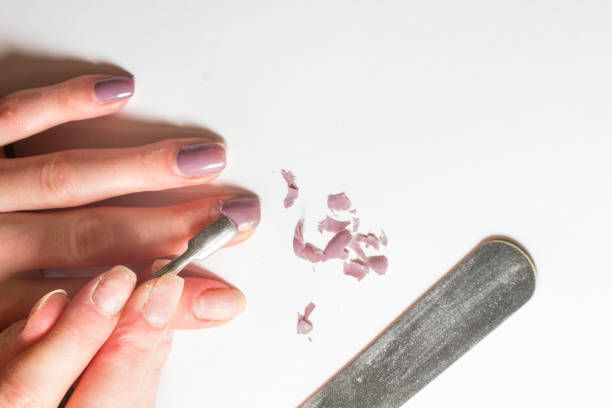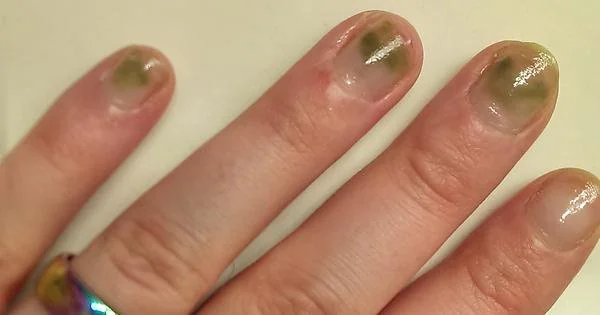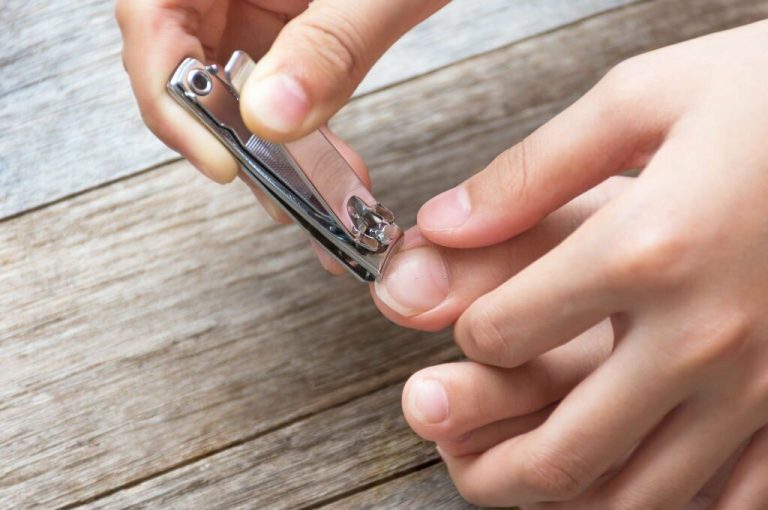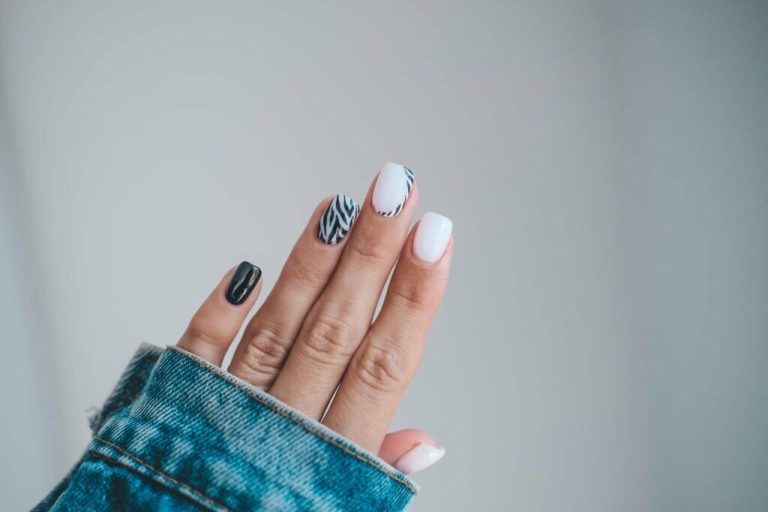How to Type With Long Nails? Tips and Tricks
As someone who loves having beautifully manicured long nails, I understand the daily challenge of protecting my nails while trying to get things done. One of the biggest frustrations can be typing on a keyboard with long nails. While long nails may look gorgeous, they can get in the way and even get damaged when using a keyboard and mouse.
I spent years searching for the right techniques to allow me to have long, healthy nails that can withstand my incessant typing for work and school. Along the way, I discovered some simple adjustments that make typing with long nails not only possible, but also comfortable.
In this guide, I will share the methods I’ve learned over the years to type efficiently and accurately while keeping my prized nails intact. With some practice and patience, having long nails does not have to limit your typing abilities.
An Introduction to Typing With Long Nails
Contents
- An Introduction to Typing With Long Nails
- Watch Out for These Common Typing Pitfalls
- Choose the Right Nail Shapes and Styles for Typing
- Adjust Your Typing Method to Use the Centers of Fingers
- Think of Your Hands Like a Pianist’s
- Use a Light Touch When Pressing the Keys
- Maintain Good Posture to Position Hands Properly
- Explore Keyboard Options to Find the Best Fit
- Accuracy First, Speed Second When Getting Started
- Patience Is Crucial When Transitioning Your Typing Style
- Take Breaks to Rest Your Hands and Nails
- Consistent Practice Is the Key to Long-Term Success
- In Summary: Type Like a Pro with Long Nails
Let’s start by looking at the appeal of long nails and the unique typing challenges they present:
- Long nail styles are gorgeous but require adjustments in daily tasks like typing. The length and shape make traditional typing tricky.
- Long nails can get caught between the keys when typing normally, leading to breaks or damage. This causes frustration for nail lovers.
- Typing with improper form can also lead to irritation and stress on the nail beds. The standard way of typing needs to be adapted.
- Resources on how to safely type with long nails are limited. More guidance is needed to prevent nail damage.
The key is finding modified hand and finger positions that allow the same quick, accurate typing but avoid placing pressure and stress on the nail beds. With practice, typing with long nails can become second nature.
Watch Out for These Common Typing Pitfalls
Here are some of the most common issues that can crop up when typing with long nails:
- The nails can easily get caught between keys if you use the tips of your fingers. This can rip or crack nails.
- Hitting the keys too hard with the nails can damage or weaken the length and shape.
- If you try typing exactly as you did before having long nails, you’ll likely experience more typos. This frustrates many during the adjustment period.
- Attempting to maintain your regular typing speed too soon can lead to more typos and stress on the nail beds.
- Without proper posture and hand positioning, you may experience hand and nail irritation. This emphasizes the need for an adapted approach.
Being aware of these pitfalls can help you avoid them as you learn to type properly with long nails. The right adjustments make a world of difference.

Choose the Right Nail Shapes and Styles for Typing
When deciding on long nail designs, it helps to consider how the shape and style will impact typing:
- Look for rounded or squoval nail shapes. These provide some width at the tip so you don’t just type with the very edge.
- Very long stiletto or coffin shapes make typing much more challenging. Consider a more moderate length.
- If you want extra length, opt for designs where not all 10 nails are super long. This gives some flexibility.
- Avoid embellishments like jewels or charms on the actual nail tips as those can obstruct typing. Consider placing those closer to the cuticle instead.
- Stronger natural or acrylic nail materials hold up better for daily typing compared to soft gel options.
Picking nail shapes and styles suited for typing helps prevent excessive pressure and damage to your manicure as you type. You want to choose designs that make it easier, not harder.
Adjust Your Typing Method to Use the Centers of Fingers
One of the most helpful adjustments I’ve made is to stop typing with the tips of my fingers. With long nails, this causes many issues.
Instead, the goal is to type using the center pads of each finger. This requires your hands and fingers to reposition slightly.
It may feel unnatural at first, but using the finger pads instead of the tips helps in a few key ways:
- It prevents the nail tips from banging against the keys. This avoids cracks and breaks.
- There is less chance of nails getting wedged into small spaces between keys.
- The wider part of the finger absorbs impact rather than the nail. Less stress on the nail bed!
Retraining your hands and muscle memory is challenging but worth it. With practice, striking the keys with the soft, fleshy finger pads becomes natural. Your nails will thank you.
Think of Your Hands Like a Pianist’s
An analogy that helped me understand proper hand and finger positioning for typing with long nails is to think of your hands as a pianist’s.
Good piano players keep their movements minimal and efficient. Their hands glide across the keys instead of punching. The focus is on using finger strength without excessive motion.
Try to mimic this controlled, efficient finger movement when typing. Avoid “hammering” on the keys to prevent nail damage and strain.
With your hands hovering lightly over the keyboard, keep movements smooth and precise. Strike each key with the minimum force needed.
This is admittedly slower at first but results in happier nails and hands. The more you practice this piano playing style of typing, the faster your typing will become.
Use a Light Touch When Pressing the Keys
Many of us have a tendency to bang or press firmly on the keys when typing quickly. I definitely did this before long nails.
However, applying too much pressure with your nails increases the chances of:
- Catching or wedging nails between keys
- Striking too firmly against the keys
- Damaging the nail edge or bed
The solution? Approach typing with a much lighter touch. This may slow you initially but is worth it.
Only use as much force as required to register the keystroke. Imagine you are tapping delicate piano keys. No harsh banging.
This prevents the force of the impact from transferring to your nail beds. With practice, light key presses become natural.
Maintain Good Posture to Position Hands Properly
Many nail typing struggles can be alleviated by proper hand positioning. This starts with good overall posture.
Be sure to:
- Sit up straight but relaxed. No hunching.
- Keep your elbows bent at about 90 degree angles.
- Position your wrists level with forearms. Don’t bend wrists up or down.
- Hover hands parallel above the keyboard. Don’t let wrists or palms rest on the desk.
- Avoid pinching shoulders up. Keep them relaxed.
Proper alignment helps prevent awkward hand and wrist angles that make typing with long nails difficult and can even cause injury. The better your posture, the easier nail typing becomes.
Explore Keyboard Options to Find the Best Fit
Standard keyboards may not be ideal for typing with long nails. Too many small gaps between keys increase chances of nail damage.
Consider exploring options like:
- Ergonomic keyboards with curved layouts that may better fit your hands.
- Split keyboards that allow you to position hands more comfortably.
- Mechanical keyboards that need less force to register key presses.
See if alternatives like these allow your hands and nails to move more efficiently. Look for ones with comfortable wrist rests too.
Finding the right keyboard for your nail length, hand size, and typing style can make practice much easier.
Accuracy First, Speed Second When Getting Started
When first learning to type with long nails, I made the mistake of trying to maintain my old typing speed. This led to more mistakes and nail damage.
Typing accurately should be your primary focus, especially in the beginning. As muscle memory develops, speed will naturally follow.
Rushing increases typing errors, which then takes more time to correct. It also causes undue nail strain.
Remind yourself: Accuracy over speed. With practice, you can type quickly again, just not at first. Nails need time to adapt.
Patience Is Crucial When Transitioning Your Typing Style
Expect a period of adjustment as you learn to type with long nails. Your speed and accuracy will dip in the beginning. This is normal.
Changing years of typing habit requires realigning finger positioning and movements. Allow yourself grace during this transition.
With regular practice, your muscle memory will catch up. Typing with long nails requires patience and persistence. Don’t get discouraged.
The more patience you have, the easier it will be to stick with better nail typing techniques. Your hard work will pay off.
Take Breaks to Rest Your Hands and Nails
Even with ideal hand positioning, typing for long periods can strain fingers, hands, and nails. This is true for all of us.
But those with long nails may experience more fatigue and nail bed soreness at first.
Be sure to take regular breaks to stand, stretch, and give hands a rest. This helps prevent overuse issues.
Also inspect nails after typing sessions to see if any adjustments are needed. Check for redness or irritation on the nail bed.
Taking breaks is always smart, but especially crucial when adjusting to typing with long nails. Don’t overdo it early on.
Consistent Practice Is the Key to Long-Term Success
As with any skill, the way to master typing with long nails is consistent, daily practice. Don’t just try it for a few days and give up.
Aim to practice proper nail typing posture and technique for at least 15 minutes daily. Keep sessions brief in the beginning.
Focus on accuracy over speed and use the right finger and hand positioning. Also remember to take breaks.
Over time, the proper nail typing methods will become ingrained. But it takes commitment to get there.
Stick with it and typing with long, beautiful nails will become easy, protecting your manicure in the process.
In Summary: Type Like a Pro with Long Nails
Who says you have to sacrifice your gorgeous nails in order to type efficiently? While it does present unique challenges, typing with long nails is absolutely possible.
The keys are modifying your approach by:
- Using the pads of fingers, not tips
- Keeping good posture for proper hand alignment
- Prioritizing typing accuracy over speed, especially when learning
With practice and patience, you can type quickly and correctly while keeping your nails long, strong, and healthy.
Forget being limited by your nails – learn the right techniques and tips in this guide to type like a pro. You don’t have to choose between great nails or great typing skills. With some small adjustments, you can have both!

Founded by Sophia Rodriguez, IGXO Cosmetics is a PETA-certified, cruelty-free, and vegan makeup brand.





